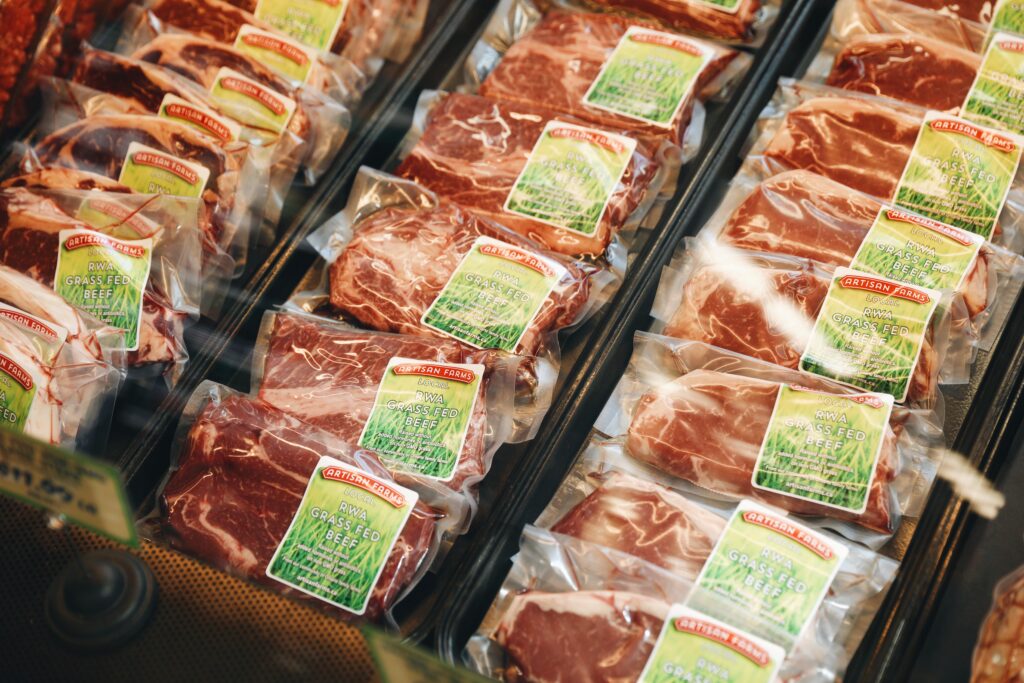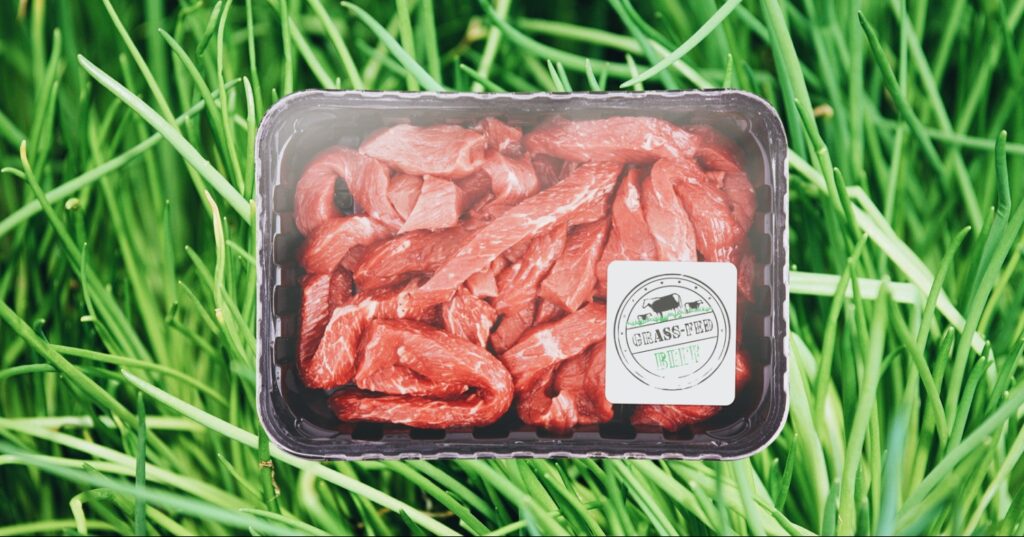The beef industry’s impact on the planet is significant. Animal agriculture’s annual greenhouse gas emissions add up to about 14.5 percent of all total emissions, according to the Food and Agriculture Organization of the UN. Cattle account for 65 percent of the livestock sector’s emissions. And, factory farming is at the center of these topics, which is why so many are advocating for eating less meat, or none at all. But, what about eating meat that’s more sustainable? It sounds like a win-win at first glance, but there are important questions to consider: When would ordering a burger made from a cow equal a lower carbon footprint? And, is grass-fed beef better for the planet? Here are the facts.

What Is Grass-Fed Beef?
First, what does the grass-fed beef label mean? The name alone sounds bucolic, conjuring up images of happy cows living an easygoing life in rolling fields of grass. But, according to the USDA, the label doesn’t have anything to do with where cows are fed, only what they are fed.
In order to be “grass-fed,” meat must come from an animal that has only been fed grass and forage such as legumes after they have been weaned off milk. But, technically, every cow is “grass-fed” up to a certain age. It’s how they are “finished,” a term for the time before they are sent to slaughter. The inverse of grass-fed beef is feedlot beef, which accounts for the majority of beef found in the grocery store.
Feedlot beef calves begin their life on a pasture with the cow that gave birth to them. They are weaned after six to nine months and are then grazed for a little while longer before being finished for 120 days on a corn or grain diet. This causes the cattle to gain weight fast, resulting in the “marbled” meat effect. They are slaughtered for food between 14 to 18 months of age.
Grass-fed cattle spend their entire lives on a pasture and because their diet is low-energy compared to grains, they are slaughtered at around 18 to 24 months old.
But, here’s where things get complicated. In 2016, the Agricultural Marketing Service (AMS), a branch of the USDA, revoked the “grass-fed” label. In a statement, the AMS said that it does not have the authority to determine whether claims made by a company are “truthful and not misleading.”
Most grass-fed beef was in fact raised and finished on a pasture. But in many ways, the grass-fed beef label is open to interpretation. It does not guarantee that cattle were fed an all-forage diet. A cow could be raised on grass and finished on grain or vice versa. And in order to earn the label, a producer must only submit documents describing the cow’s diet, according to the AMS. There is no required visit to the farm.
In short, it’s tough to guarantee that “grass-fed” beef is actually fully grass-fed. But, even if it is, is it really sustainable?

Is Grass-Fed Beef Sustainable?
Wanting your diet to have a lower impact without giving up what you love is a normal feeling. The idea that grass-fed beef is more sustainable is rooted in the idea that a responsibly managed cattle herd will help keep the land healthy. Their manure will return nutrients to the soil and no land is needed to grow corn or soy to feed them, which means that no extra land will be cleared for their food. Grass also helps trap carbon dioxide in the soil, which helps mitigate climate change. But, there are a few issues with a grass-fed system.
According to a 2018 Harvard study, a global shift toward a grass-fed system is unsustainable. Increasing grass-fed herds enough to cover the entire beef supply would require a 30 percent increase of the national cattle herd from 77 to 100 million. As it stands, our grassland resources can support only 27 percent of the national beef supply. If grass-fed cattle were given cropland-raised forage as well, the system could support 61 percent of the current beef supply, but that would mean competing with cropland used for human food consumption.
“Future U.S. demand in an entirely grass-and-forage-raised beef scenario can only be met domestically if beef consumption is reduced, due to higher prices or other factors,” says the study.
In short, it’s not practical to shift to a 100 percent grass-fed system. And, there are other factors that add to grass-fed beef’s unsustainability. The study notes that grass-fed beef live longer, and so they produce more methane, a greenhouse gas that is 21 times more potent than carbon dioxide.
Additionally, Linus Blomqvist, director for conservation, food and agriculture for the Oakland, Calif.-based Breakthrough Institute, told NPR that there is not enough evidence to support the idea that pasture-raised cattle sequester enough carbon to make it more sustainable than feedlot beef.
And there’s another issue still. Around 75 to 80 percent of grass-fed beef sold in the U.S. is imported from Australia or New Zealand. But, this might not be obvious because if meat is processed in a USDA-inspected plant, then it can be labeled as a product of the U.S.

So, what’s the solution?
How does one go about reconciling their love for the planet and for burgers? According to the Harvard study: “Only reductions in beef consumption can guarantee reductions in the environmental impact of U.S. food systems.”
Animal products have overall higher greenhouse gas emissions compared to plant-based foods. So, start by eating less meat in order to reduce your carbon footprint. Try swapping burgers and ground beef for plant-based versions, and cook them using your favorite recipes. If your first foray into beef alternatives leaves you wanting, try a different brand!
Or, maybe you’re worried about protein, or not feeling full enough. A meal that includes grains, legumes or other types of plant protein, and vegetables should leave you feeling satisfied.
You don’t need to become a hardcore vegan. But rather, eating less beef (and cheese!) is not only a little kinder to the planet, but also to animals.


